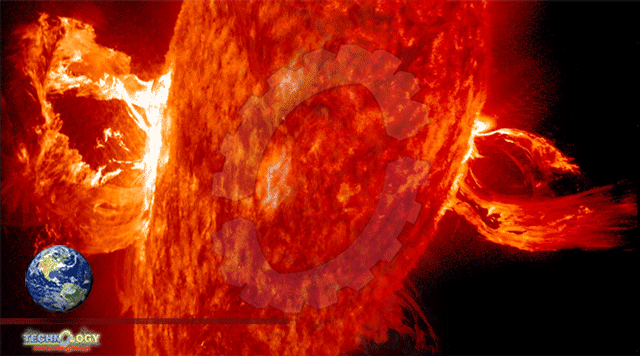A major eruption on the far side of the sun Tuesday created one of the largest coronal mass ejections (CME) in recent years. With an eruption of this magnitude, the Earth dodged a bullet — quite literally according to Jim Todd, the Director of Space Science Education at the Oregon Museum of Science and Industry.

“We saw a very large coronal major eruption, which is a major eruption of storm on the sun,” Todd explained. “It happened on the far side, which is awfully good because it was enormous.”
Though the explosive CME is not expected to strike Earth, images captured by satellite and seismic mapping showing the sheer size of the major eruption had many people talking, Todd said
Todd said scientists estimate the flare of the major eruption stretched to roughly 400,000 kilometers, greater than the distance between the Earth and the Moon.
According to Todd, CME events of this magnitude are caused when the negative and positive charges within the electromagnetic field on the sun contradict, resulting in a powerful discharge or sunspots.
Todd said CME events and sun flares are not independently surprising, though the scale of this major eruption would pose a serious threat to Earth, had our planet been in the direct line of fire.
“So, what are we worried about, and why are we talking about this?” Todd posed. “If this storm was headed towards the Earth, it would cause a massive worldwide aurora effect, which some say would represent similarities to the 1859 Carrington Event.”
The Carrington Event of 1859 was a major CME event that impacted Earth and essentially knocked out all telegraphs. With the advancements in technology since then, Todd said a similar event today could be catastrophic and potentially shut off most forms of electronic communication.
“If this storm was directed our way, it very easily could have knocked out some of the satellites, the power grid, cell phones – the list goes down,” Todd explained. “We would be more vulnerable now, with all the digital technology that we have come to love and use.”
Todd said we are lucky scientists continue to monitor this type of solar activity. Based on data tracking, Todd said we can predict trends in solar activity and better prepare for impact if needed.
According to solar trends, Todd said we are actively heading into a timeframe of increased solar activity.
“We’re going from a solar minimum into our solar maximum,” Todd said. “In 2022, the sunspot counts have gone way up, and in 2020 and 2019 the sun was very quiet, with little activity.”
“The data pattern follows an 11-year cycle, which expands and contracts,” he continued. “And we’re just starting the peak, so we’re going to see this kind of activity for the next couple of years.”
Although it is still early, Todd said scientists have theorized that this week’s CME major eruption may be linked to the same Jupiter-sized sunspot that generated a geomagnetic storm on Feb. 4, and took out 40 SpaceX satellites.
“Many scientists believe that the storm that we saw yesterday was related to the same sunspot,” explained Todd. “The latitude level looks like this is the very same spot, so they’re expecting as it comes around in the next few days we may see that spot is still active. And it can erupt again, so we need to be watching this.”
Todd said the sunspot will be back in Earth’s view within the next 11 days. He warned the public not to try and look for the spot without the use of solar viewing glasses, as it may cause permanent eye damage.
Depending on where you live, Todd said parts of Earth may be able to view remnants of the flare in the form of auroras.
According to Todd, it would take about three to four days for CME waves to hit the Earth. Until then, he told KOIN he is grateful that scientists are continuing to monitor this activity.
“This is a huge storm and a major eruption. Does it surprise us? No. But there is always the question of ‘what comes next?’” Todd said. “All these observatories are monitoring the sun for us and they’re doing a great job. We’re learning from it. Hopefully, we’ll be ready.”
Source: NBC4i